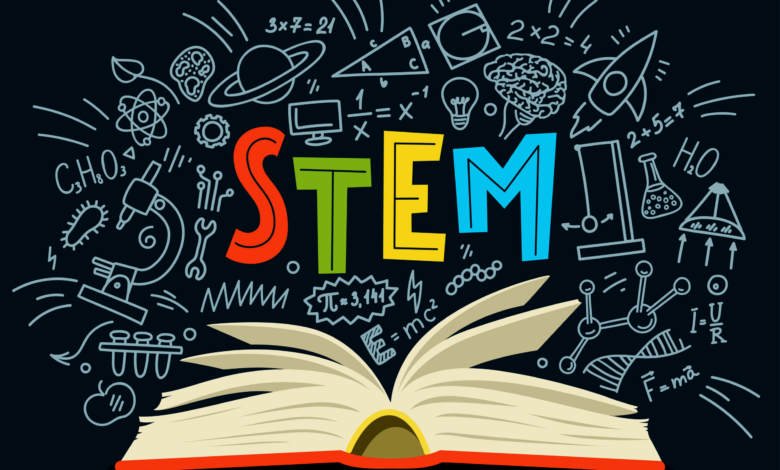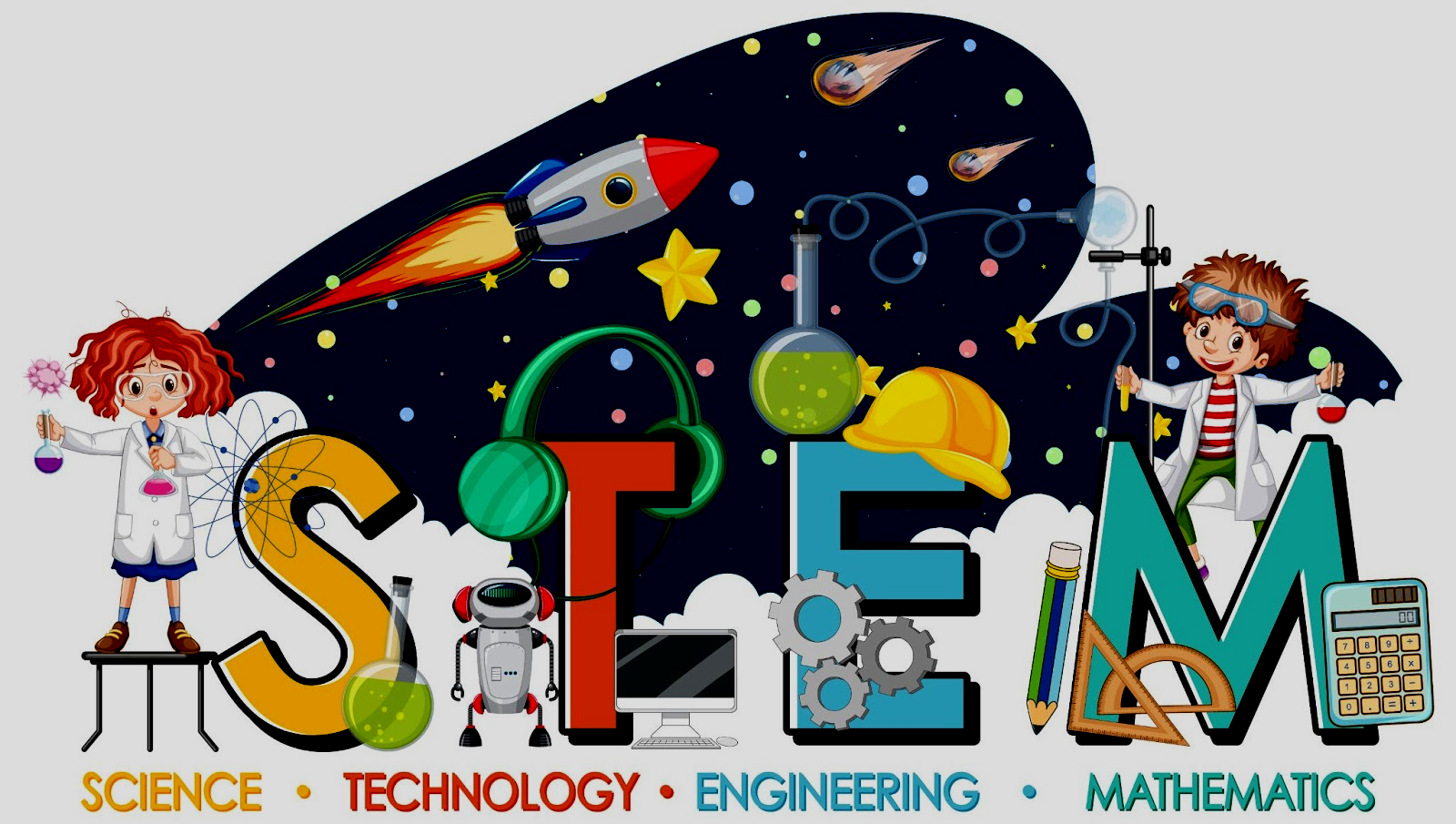How to Instruct STEM Topics in the Classroom Efficiently

We have some fantastic advice for STEM Topics to utilize in the classroom, whether you’re an experienced educator looking to learn more efficient techniques or you’re just starting out in the field. We’ll talk about STEM teaching strategies, lesson planning, student engagement, and the best approaches to evaluate STEM students in this post.
Since the STEM fields are always expanding and evolving, educators in these fields must be creative and flexible in their approach to teaching in order to maximize student learning. Teaching STEM involves more than just imparting knowledge and correcting students when they make mistakes.

Instead, promoting independent thought and asking questions are the cornerstones of the perfect STEM learning environment. Failure is a necessary component of growth in STEM fields and teaches students how to address problems.
What are STEM subjects?
If the terms Science, Technology, Engineering, and Math are unfamiliar to you, they stand for anything that falls under those categories. Though it’s important to note that there are significant overlaps between these topics, we have outlined what these themes often cover below:
Science.This covers topics like psychology, geology, and astronomy in addition to the obvious choices like biology, chemistry, and physics.
Technology.Technology, which covers subjects like computer science, software development, artificial intelligence, and programming, is arguably the largest and most comprehensive of these categories.
Engineering.The four primary fields of engineering are chemical, civil, mechanical, and electrical engineering, albeit this list is not all-inclusive.
Maths. You most likely recall studying statistics, algebra, geometry, and fractions in school. Math also includes economics-related topics.
There is always a strong need for competent graduates because these businesses are perpetually changing, and frequently these expectations are not satisfied. Because governments and institutions all over the world were developing STEM programs and activities to draw students to these courses, STEM subjects were initially grouped together in the early 2000s. But in recent years, STEM has started to take a different turn and is now more than just a catch-all for courses like math and science.
STEM fields have given rise to new pedagogical approaches and increased academic integration. In contrast to conventional science, math, and IT classes, learning and memorization of material are no longer the main goals. An increased focus has been made on using scientific knowledge and understanding technological production.
Read More:Top Ten Jobs In 2024
STEM teaching methods
Here, we go over a few of the most popular methods you can use to teach STEM to your pupils. Since all of these strategies are beneficial, it could be worthwhile to vary your teaching style and employ a range of tactics to maintain your students’ attention.
Project-Based Learning
By working on a project, students are encouraged to apply their knowledge and acquire new abilities. They put in a lot of time researching and coming up with a solution for a question or issue. As a teacher, your job is to act as a facilitator, empowering students to take charge of their assignments from beginning to end. In STEM, creating an app or a bridge model are two instances of project-based learning.
Problem-Based Learning
While this approach and project-based learning share certain similarities, the main distinction is that in this case, the students are required to analyze and assess a given topic. Since there is typically more than one obvious solution to an issue, this calls for a high level of thought. This strategy fosters leadership, collaboration, and creativity. As an illustration of PBL, consider having your students draft their own company concepts to address societal issues.

Inquiry-Based Learning
Students are encouraged to ask as many questions as they like about the subject matter because the primary goal of inquiry-based learning is to emphasize the role of the student in the learning process. This kind of learning fosters the development of critical thinking, questioning, and problem-solving abilities. Since it’s student-led, the students will have to choose the questions they wish to ask. A teacher’s job is to pique students’ interest and encourage introspection.
Lesson planning for STEM subjects
Although it may seem intimidating to plan a STEM class that spans so many disciplines, creating a curriculum can actually be a lot of fun. This is due to the fact that teaching STEM can make learning more fascinating for you as well as for your students. Creating an environment that fosters creativity is more important than learning content to teach.
To make sure that your pupils have the best possible learning experience, there are a few things to consider as you organize your sessions. A quality STEM instruction ought to:
Be hands-on. WWhether students are conceptualizing a concept or making and building something themselves, the best STEM education involve hands-on, practical activities. Students are much less likely to get bored or sidetracked in this way, and having a finished work to assess is satisfying for them.
Mimic real-life scenarios. This is an additional rationale for the importance of experiential learning. The fact that STEM subjects teach students practical skills that they can apply right away in the real world is one of its most significant contributions. The aim of education is to prepare pupils for the real world, yet a lot of what is taught in traditional schools is unrealistic.
Integrate maths and science into projects seamlessly. The scientific and math assignments your students do should have a purpose, relate to real-world situations, and be pertinent to the topic they are working on right now. Maybe understanding physics will help them comprehend how to make anything, or maybe solving math equations would guarantee that their design functions well.
Using the Engineering Design Process
The Engineering Design Process (EDP) is one tool for lesson planning. Students can use these procedures to provide solutions for challenges as part of a project. This approach to project-based learning ought to promote flexible designs, inventiveness, and workable solutions. The actions are as follows:
Ask
Start by posing insightful inquiries to your students regarding their project or the things they wish to produce. For what purpose is it used? How are they going to design it? Make use of the first few minutes of the class to pique your pupils’ interest and get their minds going.
Research
This is a time for students to research around the topic, whether that involves talking to you, working with a STEM volunteer, using a laptop to do some research, or watching relevant videos. Research can help students find out what similar products or solutions already exist, and let them know how they can do better.

Imagine
Your students now have the chance to generate as many ideas as they can in groups. It is your responsibility as a teacher to make sure that everyone’s voice is heard during this collaborative process. Students should be required to listen intently and maintain focus in a judgment-free zone. Thought maps can also be an effective tool for idea retention, brainstorming aloud is still a highly recommended method.
Plan
It’s now up to your student groups to select a solution and devise a plan for implementing it. They will need to take into account everyone’s unique thoughts from the brainstorming process, their initial questions, and the research they conducted in order to accomplish this. Making plans can be challenging, so assist your students by ensuring that their ideas are recorded, whether digitally or on paper, and that their opinions are taken into consideration.
Create
Students can use the designs they just developed to build a prototype during this portion of the session. Now is the moment for kids to be imaginative, hands-on, and realistic. Here, students will find out if their solutions are effective and fulfill the initial requirements. Just keep an eye on things and give the students encouragement—you don’t want to be overbearing.
Test
Next, the students must devise a method to evaluate the efficacy of their inventions. Do they address a problem or fulfill the brief? It should be possible for them to test and document their innovations. You can ask them questions that will make them think, or you can ask them what criticism they would give themselves before giving them advice. Another excellent strategy for promoting critical thinking and teamwork is peer review.
Improve
In this last section of the class, students explore ways to make their ideas better. After that, students will get the chance to rework their product, make changes, and produce the following prototype. You can carry on with this cycle indefinitely, or until they are satisfied with the outcome. Whether each project takes a single session or several weeks is up to you.
Why are STEM activities important?
Why are STEM activities so vital, one may wonder? For hundreds of years, conventional teachings have been an effective learning model. The truth is that some people learn well from traditional lessons, while others do not. Many kids respond considerably better to hands-on activities than written exercises, which makes perfect sense given how much energy youngsters have! In fact, this can assist control their behavior in the classroom; however, our Behavior Management course has additional advice on that topic.
Here are some of the abilities that kids are likely to acquire when STEM is taught to them effectively:
- Critical reasoning
- Self-directed education
- Excellent teamwork and communication
- Digital proficiency
- Solving issues
- Originality
- Introspection
The best thing about STEM activities is that you can modify them to fit a variety of age groups, skill levels, group sizes, and interests. They are extremely beneficial to employ in teaching and learning situations because of their versatility. STEM activities also offer a plethora of options, and because they are so useful, many of them can be mistaken for kid-friendly games. As a result, learning will be perceived as less tedious or like a chore and kids will be more involved in it.
Try our Volunteering in the Classroom: Bringing STEM Industry into Schools ExpertTrack to learn how to organize and present interesting STEM courses and activities. You will get knowledge on how to organize classes, interact with students in an effective manner, and foster an inclusive learning environment whether you work as a STEM volunteer at a club or as a teacher.
Formative assessment in STEM teaching and learning
Given that STEM classes emphasize a practical approach to learning, you might be asking how to evaluate students in STEM classes given that standard approaches like exams and brief tests don’t work well with them. Since formative assessments offer continuous feedback aimed at improving both your teaching and your students’ learning throughout the year, they are a far better tool for monitoring student development.
More precisely, formative evaluations assist students in recognizing their advantages and disadvantages, making it simple for them to determine which areas require development. Additionally, they assist educators in identifying frequent areas in which pupils encounter difficulties so that problems can be promptly resolved.
Because it doesn’t rely on memory recall, this type of evaluation is perfect for STEM education because it fosters active participation in the classroom and is more akin to real-world circumstances. Not every student has the ability to retain vast amounts of material, but this does not imply that they lack intelligence or ability.
Exams and other summative evaluations may discourage certain students from studying if they are aware of their shortcomings. This may be especially true for scientific and math subjects, where written examinations can be highly challenging. STEM fields should value practical innovation and problem-solving skills more than writing or memorization prowess.
Formative evaluations can involve asking pupils to:
- Write a proposal for a study.
- Write or sketch a brief synopsis of the lessons they learned in class.
- Make a concept map to demonstrate their comprehension of a subject.
- Create a project prototype.
Enroll in our Assessment for Learning: Formative Assessment in Science and Maths Teaching ExpertTrack to learn more about formative assessment for STEM subjects. This course will help you improve as a teacher by teaching you how to assess students’ understanding and give them feedback that will help them learn.
How do you engage students in STEM?
We already know that there is a dearth of diverse candidates and qualified graduates in STEM fields. How then do we address these problems and encourage kids to choose STEM-related careers? You start it all in the classroom, which is where it all starts.
Diversity in STEM subjects
STEM has always been a field dominated by men. There is a notable gender imbalance in higher education, as evidenced by the fact that 35% of STEM students in the UK were female in 2018 according to data from UCAS published by HESA. The ratio of women pursuing degrees in math and science was slightly higher (39% and 37%), but the number of women pursuing computer science degrees was incredibly low (19%). Remarkably, only 19% of students pursuing degrees in engineering and technology were female, while 81% of students were male.
Even fewer women than the number of students majoring in STEM fields at UK universities enter the STEM workforce.According to WISE 2018 workforce figures, women made up only 22% of the core STEM workforce.
The 2014 CaSE Report about Improving Diversity in STEM revealed that Black and minority ethnic males are 28% less likely to work in STEM than white men, despite the fact that there hasn’t been as much research on racial diversity in STEM in the UK recently. On the other hand, compared to white women, a greater proportion of BME women were employed in STEM fields. Given that these data are from 2014 and don’t offer a comprehensive analysis of the ethnic diversity
Creating an inclusive environment
Here is a list of ideas we’ve put together to help you foster an inclusive and diverse learning environment for your pupils in the classroom:
- Encourage the inclusion of diverse gendered and ethnically diverse STEM role models and heroes. Schedule speeches from these individuals or play motivational films for your kids.
- Make an effort to start clubs or educational initiatives for underrepresented groups in STEM, such an engineering or STEM club for girls.
- Establish a welcome and inclusive atmosphere for people of all genders.According to a University of Washington study, girls were three times more likely than boys to enroll in a computer science course in a classroom with plants, lighting, and nature-themed décor rather than science fiction literature and posters.
- Make mentors in STEM available to kids. These could be STEM volunteers from outside of school who have jobs in STEM sectors, or older students who can support them or assist with projects.
Making the lessons enjoyable is just another approach to get the students involved! And never forget that they will most likely appreciate the lesson as much as you are. You can demonstrate that STEM subjects can be equally enjoyable as art subjects by doing the following:
- Go on a field trip.
- Hold a contest.
- Get untidy
- Engage in gaming
Final thoughts
We hope that this post has given you enough advice to start teaching STEM or motivated you to try a different teaching strategy. Encourage your children to take advantage of everything that STEM has to offer; there are a plethora of chances in this sector. They might even go on to have a prosperous career in STEM, possibly in a position that doesn’t even exist yet. Though it’s not always easy, inspiring the next generation of people is incredibly fulfilling and has a significant role in influencing the society we live in.










